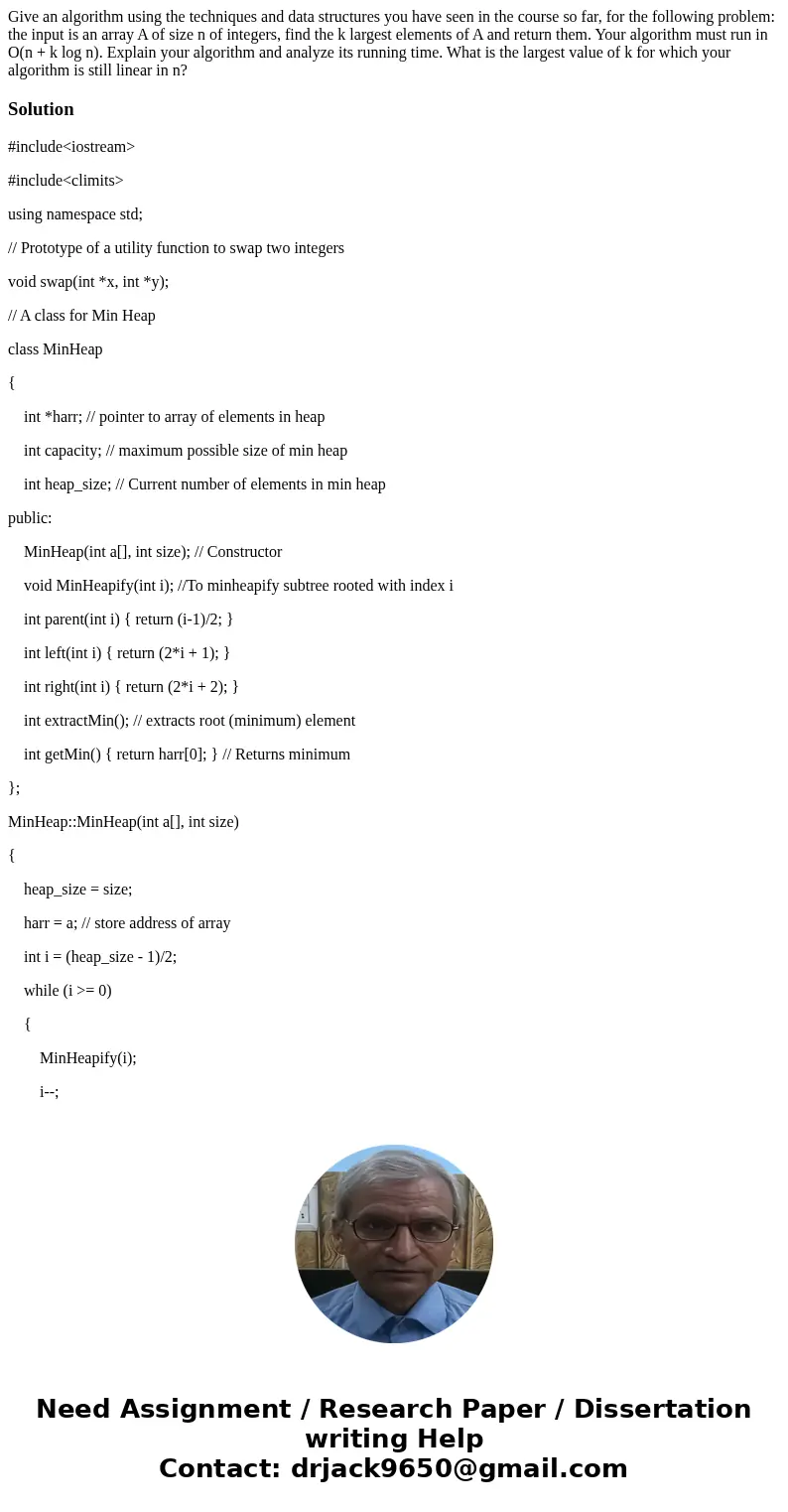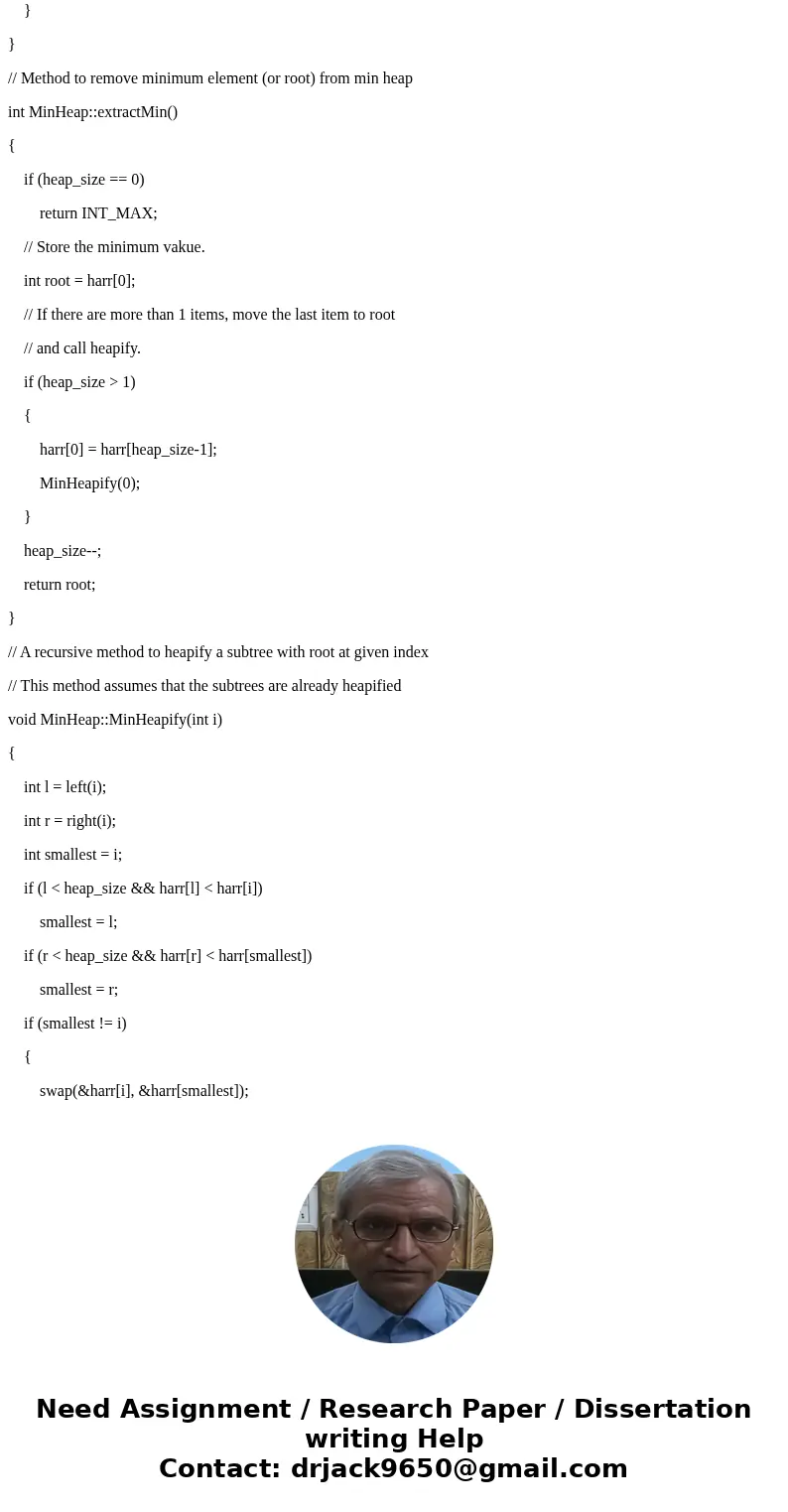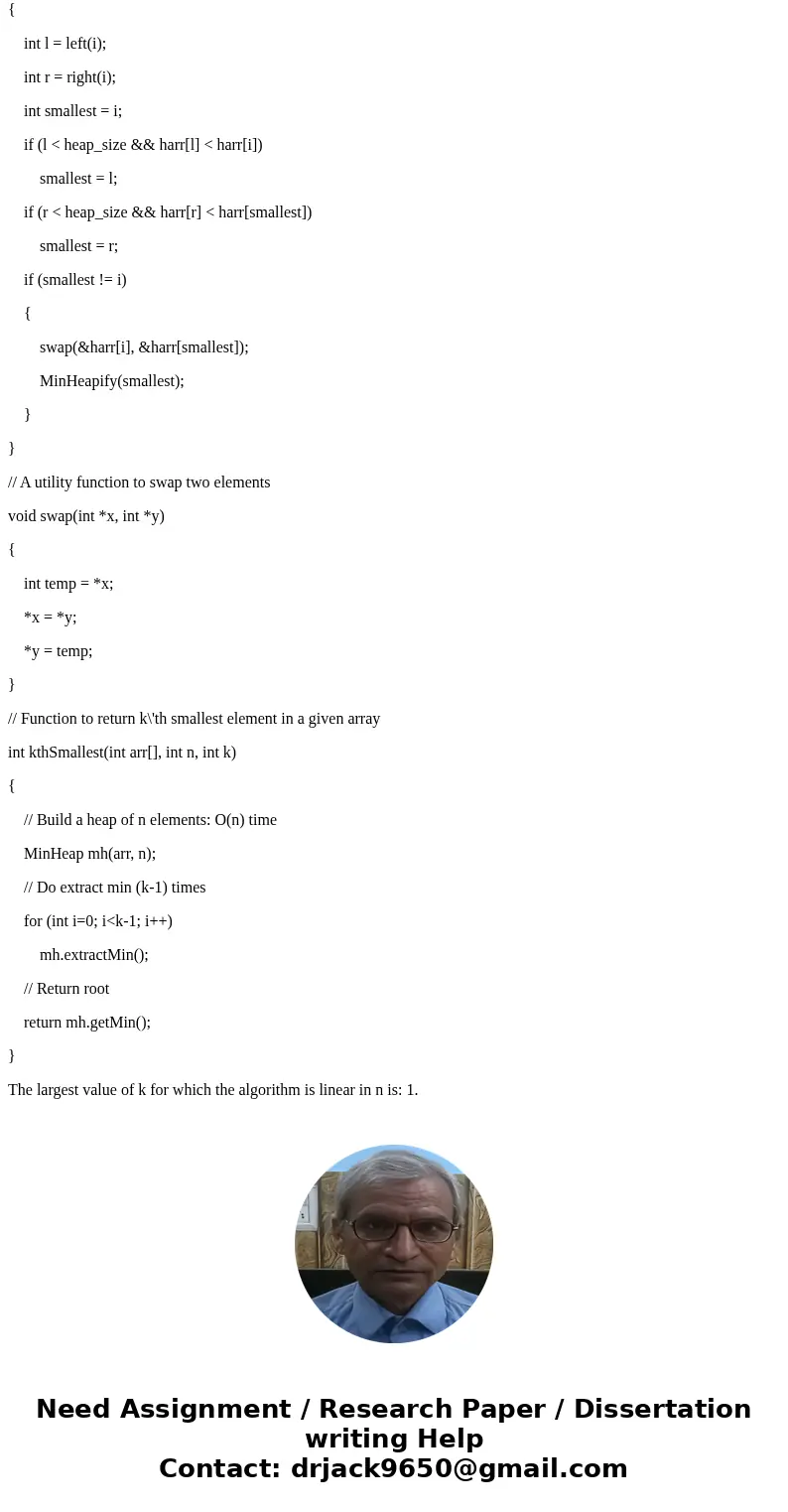Give an algorithm using the techniques and data structures y
Give an algorithm using the techniques and data structures you have seen in the course so far, for the following problem: the input is an array A of size n of integers, find the k largest elements of A and return them. Your algorithm must run in O(n + k log n). Explain your algorithm and analyze its running time. What is the largest value of k for which your algorithm is still linear in n?
Solution
#include<iostream>
#include<climits>
using namespace std;
// Prototype of a utility function to swap two integers
void swap(int *x, int *y);
// A class for Min Heap
class MinHeap
{
int *harr; // pointer to array of elements in heap
int capacity; // maximum possible size of min heap
int heap_size; // Current number of elements in min heap
public:
MinHeap(int a[], int size); // Constructor
void MinHeapify(int i); //To minheapify subtree rooted with index i
int parent(int i) { return (i-1)/2; }
int left(int i) { return (2*i + 1); }
int right(int i) { return (2*i + 2); }
int extractMin(); // extracts root (minimum) element
int getMin() { return harr[0]; } // Returns minimum
};
MinHeap::MinHeap(int a[], int size)
{
heap_size = size;
harr = a; // store address of array
int i = (heap_size - 1)/2;
while (i >= 0)
{
MinHeapify(i);
i--;
}
}
// Method to remove minimum element (or root) from min heap
int MinHeap::extractMin()
{
if (heap_size == 0)
return INT_MAX;
// Store the minimum vakue.
int root = harr[0];
// If there are more than 1 items, move the last item to root
// and call heapify.
if (heap_size > 1)
{
harr[0] = harr[heap_size-1];
MinHeapify(0);
}
heap_size--;
return root;
}
// A recursive method to heapify a subtree with root at given index
// This method assumes that the subtrees are already heapified
void MinHeap::MinHeapify(int i)
{
int l = left(i);
int r = right(i);
int smallest = i;
if (l < heap_size && harr[l] < harr[i])
smallest = l;
if (r < heap_size && harr[r] < harr[smallest])
smallest = r;
if (smallest != i)
{
swap(&harr[i], &harr[smallest]);
MinHeapify(smallest);
}
}
// A utility function to swap two elements
void swap(int *x, int *y)
{
int temp = *x;
*x = *y;
*y = temp;
}
// Function to return k\'th smallest element in a given array
int kthSmallest(int arr[], int n, int k)
{
// Build a heap of n elements: O(n) time
MinHeap mh(arr, n);
// Do extract min (k-1) times
for (int i=0; i<k-1; i++)
mh.extractMin();
// Return root
return mh.getMin();
}
The largest value of k for which the algorithm is linear in n is: 1.



 Homework Sourse
Homework Sourse